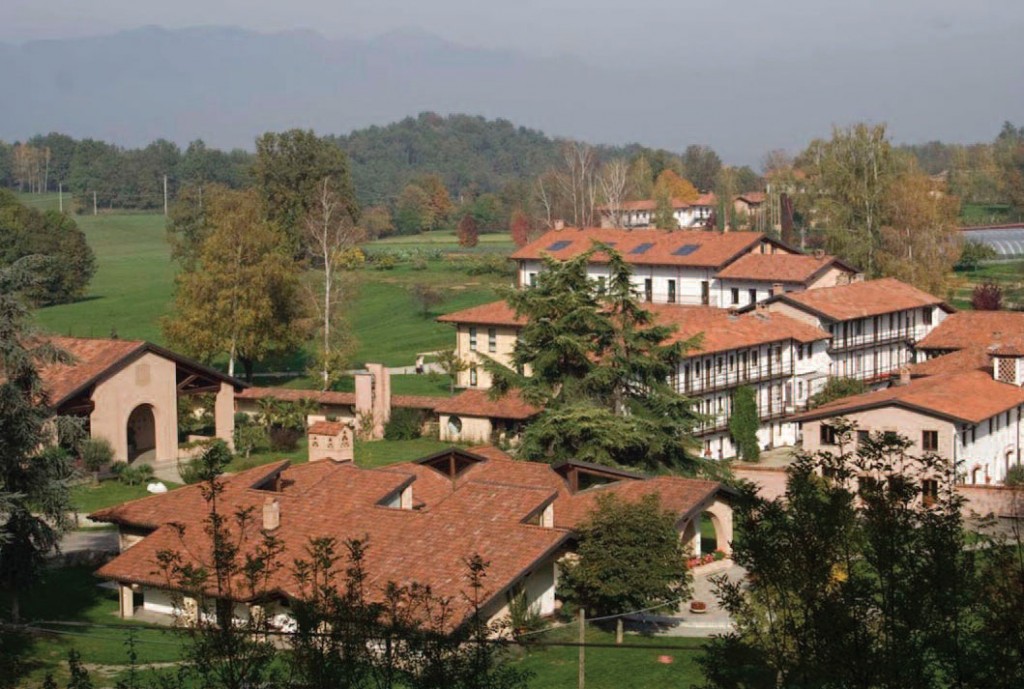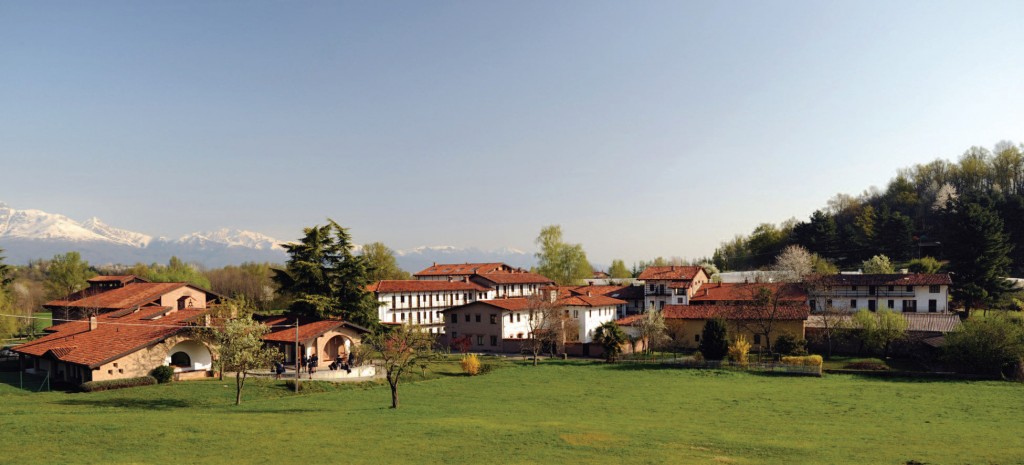
“There must be monasticism in the twenty-first century!” So said a friend not long ago. Both his implicit protest and his conviction make sense. The landscape of the spirit in the West would be torn and lacking if the monastic way vanished in our time. Even for those who don’t share the same faith, it is a sign—of concentrated intention, deliberate simplicity, ancient truth, refinement of feeling, unconditional willingness to live together. Every real monastery is an ascent. “Who are you?” they ask. And what do we wish? The Bible is a book of signs, from the rainbow above the Ark to the “signs and wonders” of The Acts of the Apostles. We can’t seem to do without signs to orient our lives: landmarks in the air. The monastic community of Bose, terrestrially speaking not quite a two-hour drive toward the mountains from both Turin and Milan, knew from its beginnings fifty years ago that it too must be a sign. “Try … to make the community a sign,” reads the Rule of Bose, its foundation document. “Keep watch over its authenticity, and do not let it become a dull, colorless institution.”
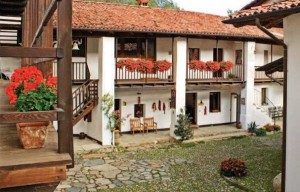 Bose is a new kind of monastery. It is resolutely ecumenical: Catholics, Protestants, and Orthodox from a number of different regions and churches are community members. It lives now the reality of the “undivided church,” abolishing nearly a thousand years of distance and contention, and what an unexpected relief it is to feel that there at least, on that high plateau facing the Alps, the church is one.
Bose is a new kind of monastery. It is resolutely ecumenical: Catholics, Protestants, and Orthodox from a number of different regions and churches are community members. It lives now the reality of the “undivided church,” abolishing nearly a thousand years of distance and contention, and what an unexpected relief it is to feel that there at least, on that high plateau facing the Alps, the church is one.
It is a community of some seventy brothers and sisters, fratelli e sorelle. This too is new. The interviews with community members in the next pages look closely at this innovation. Its origin is the obedience of the founding prior Enzo Bianchi to what presents itself with sincerity and unmistakable merit. He too reads signs. In the beginning, soon after the Second Vatican Council concluded its work to renew the Roman Catholic Church, both men and women wished to create with Brother Enzo a new kind of monastery. He chose to say yes. Speaking of that moment of choice, he has written, “I had two solutions: refuse a mixed monastic life in the name of tradition; or say yes and dare to try a new adventure, proving that men and women could live the same spiritual and monastic experience—together. When you are 25, you have nerve! … Our community could … begin to breathe with both lungs: the male and the female.”
It is a community based on three fundamental principles: radical commitment to live the Gospel, life in common, and celibacy. And a fourth principle: closeness to the secular world that surrounds them, without loss of identity. This theme recurs in the interviews, where Brother Guido Dotti speaks of “a clear project of monastic life in dialogue with the contemporary world.” The brothers and sisters wear a habit—a cowled, ivory-colored robe—for church services only; at other times they dress like any of us. No barrier.
A central practice at Bose is lectio divina, close meditative reading of Scripture, and each Saturday evening a community member offers a searching public lectio to the many visitors who come to Bose for spiritual renewal. Rowan Williams, the widely respected former Archbishop of Canterbury, knows Bose well and views it as a sign of the future of monasticism. Bose offers, he has written,
a unique remodeling of the traditions of classical monasticism in a style that is compelling for countless people today. It is a community in which the corporate study of Scripture is central; those who have experienced biblical reflection in community at Bose will know what an extraordinary experience it is, an opening of unimagined depths in the text. But the friends and guests of Bose will also recognize how this approach shapes the whole ethos of worship through a liturgy that, like all the best monastic liturgies, lays out the wholeness of scriptural imagery and narrative in all its rich interconnection and interdependence. Brother Enzo’s writings … provide the resources we need as Christians to bring real illumination to the confusions of our culture. Enzo Bianchi is one of the most significant Christian voices in Europe.
The community is self-supporting. The traditional imperative ora et labora—pray and work—in the sixth-century monastic Rule of St. Benedict is respected. Guests and retreatants are welcomed throughout the year apart from the two coldest months of winter. An outstanding book publishing program offers in Italian everything from early Christian sources to contemporary spirituality and social thought. Crafts such as pottery, metalwork, weaving, and tisanes, jam, and honey from the monastery garden contribute to a colorful monastery store. The community has audibly cared very much for the music of liturgy. “Signore,” they sing—Lord—with a piercing blend of clarity and longing. The Bose community is radiant, and monastic without compromise.
They should speak for themselves. The interviews that follow date to May 2015.
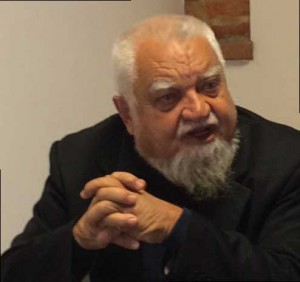
Speaking with Prior Enzo Bianchi
“At a certain moment there was an intuition that instead of dedicating my life to politics, toward which I was leaning, I should lead a Christian life—just that. In time I thought of monastic life. There were three with me, another young man and two women. Offices morning, noon, and night. The community started that way. I obeyed what occurred, I had no big project. I said to the Lord: a simple monastery of our time, that is all I ask. Seven or eight brothers would already be quite a few. I had no sense of what lay ahead.
“At the beginning we had many difficulties. The local bishop opposed us: we couldn’t celebrate the Eucharist, he wouldn’t receive Protestants, and he didn’t want to speak with me. However, Cardinal Pellegrino of Turin took the responsibility. He visited us in 1968 and lifted the prohibition against the Eucharist. He assigned a Jesuit to serve as an intermediary. In time the cardinal and local bishop urged me to study for the priesthood, but I preferred to remain a brother. It’s enough for me to be what I am. In the early years we went to Mass in the nearby village, like the Pachomian monks in the Egyptian desert. Now we have priests among the brothers.
“We never thought to attract attention as we have. We received confidence that we didn’t deserve. Cardinal Pellegrino had great confidence in me, as did Patriarch Athenagoras who took a few of our number to Mount Athos. Throughout my life I’ve encountered even too much confidence—the Lord has done many things in spite of me. I do try to give confidence to people: I say that if you have confidence, others will have confidence. People today have little confidence, little hope, little faith. And what they wish from us monks is a word of confidence. I believe the Lord has asked this of us more than all the rest.
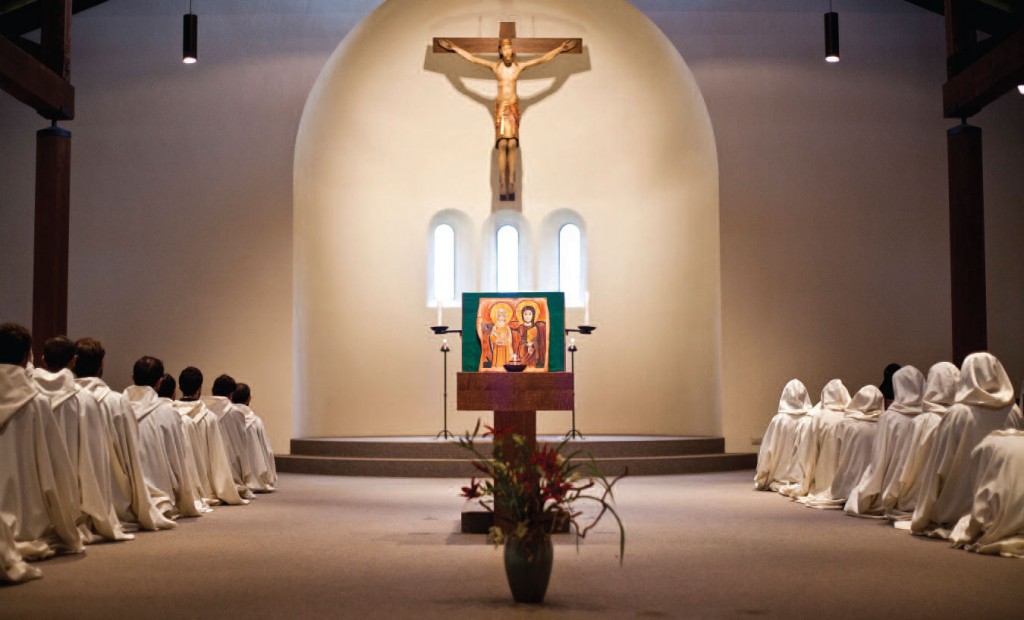
“Little by little we constructed this life. Everything that we sought to live of the tradition, we wished it to be motivated by today. We wanted there to be always a justification today. And that allowed us in today’s secular society to have a monastery that lives the tradition without being traditional in many of its forms. It is also true that our life is transparent; people can see how we live. There is no barrier that prevents others from seeing us and understanding. I believe that simplicity, joined with the will to try to live the Gospel, is the specificity of our community.
“One must have the courage to take seriously the secularized society that we are. At Bose we have a life like others’ lives. Evangelical, tied to the Gospel, but the time of the great monasteries, rituality, a sacred world—that has to be renounced. Today we must see what is really fitting: a life of prayer, a life of work, of relationships, communication and communion in a shared life, celibacy. We must have the courage to peel away everything in the tradition that was very good but no longer has a basis today. The essence is the same: gospel, celibacy, life in community are the foundation. All the rest can change.”
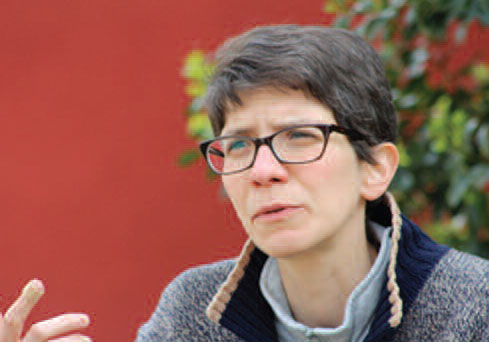
Speaking with Sister Elisa Zamboni
“I joined the community twelve years ago. When I first visited I was completing a degree in philosophy at the University of Verona, and I was looking for something, but I didn’t know monastic life and didn’t know that I was looking for this way of life, the Gospel. Then, yes, I met the community and so my history, my life, my search, met another history, another life, and I joined that history.
“As a member of this community, I am not limited because I am a woman. In a concrete way I can say that brothers and sisters live the same life, have the same tasks, receive the same requests from Prior Enzo: we work in many areas, we preach, give retreats, offer lectures to novices, retreatants, guests. Yes, some work is more linked with the women—for example, making jams—and at the moment there are only brothers in the pottery shop, but that is circumstantial, the potters happen to be men. In many areas we work together. I work for the publishing house with both brothers and sisters. We share the same office, the same work. It’s true that people can have an image of the community as if women are behind men. But this is, I think, a problem throughout society. Prior Enzo asks the sisters to be more present in the life of the community, even to have a public word. The sisters have to be more and more present, to have no fear, to be there where we are.
“It is important that I find my way to live the Gospel in monastic life as a woman, not as a brother. I am a sister, I have my way of reacting, my way of speaking, preaching, reading, working. And there is no compulsion not to
live in this way that is mine. This is our richness. In the community there are two faces, the women’s and the men’s, and they look for the way to be in dialogue, to be in front of one another, not one behind the other. We are different, and we have not to hide the differences. The important thing is that the differences be always in dialogue, and in the same need to live together the Gospel.
“There is a sister who is responsible for the sisters. There is only one prior for the whole community, only one Rule, above all only one Gospel. But it’s true that we have always had the feeling that it’s important also for the sisters to have a senior sister and for there to be moments when we live some things by ourselves—for example, to have meetings only for sisters to speak about aspects that are more linked with our being female. But, for me, to have always the brothers in front of me, in prayer, in work, in the shared daily life, is really a help.
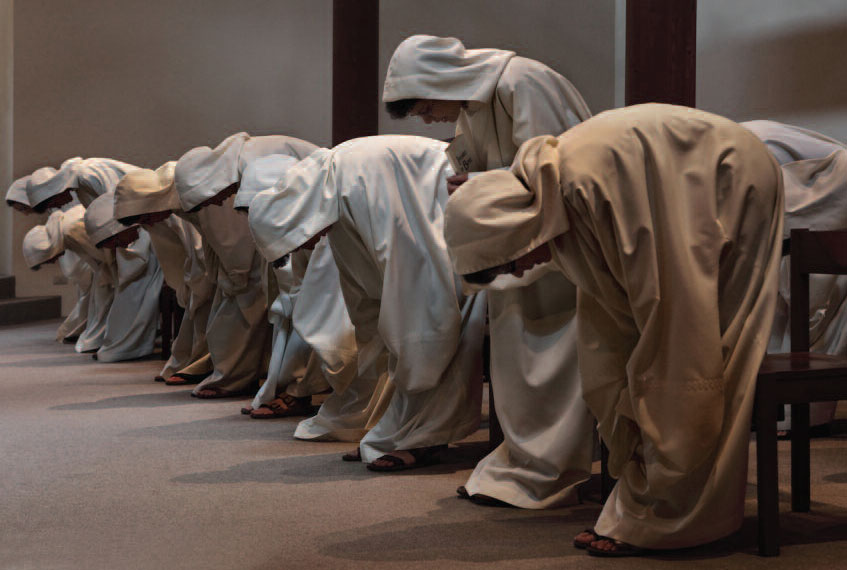
“We are men and women, we are bodies, and we are not angels, so, yes, there is a risk that a sister or brother can fall in love. We do not imagine that we are living in a place where feelings and affections are absent. What is important is that each member of the community, each brother and sister at the beginning of monastic life, make a deep discernment about celibacy. Really asking herself or himself the question: will I live my love in a deeper way in celibacy or in marriage? Without fear asking this question and answering truthfully. If we make this discernment, then little by little we discover how to live our celibacy freely; that means without fear of being close to a brother, knowing that my life is complete because I feel that I can live my love better in a common, celibate life than in a couple. ‘Better’ is not a judgment, it simply means better for me, for my life, to be a real woman, a real nun, a real Christian woman who tries to live the Gospel.
“There are many young or relatively young sisters and brothers. Where there is life, it calls to other lives. The community tries to speak a language, to say a word that is true now in this moment, in this year, for these people, and not to lead a life and speak a language defined centuries ago. The community tries every day to live the Gospel with the people of this year, of this moment—and this, I think, is what calls to young people who are looking for the meaning of their lives.
“Prayer … To enter into the special moment that is the moment of prayer. You may come running from your work, but when you enter the church and kneel in silence with the other sisters before the service begins, even our bodies are living the wish to be there with all of myself—with mind, heart, body, and soul in front of God. This is our way. For us it’s important to live what we are living, to be there with the whole self. The body is not apart from what we live, even in our prayers.”
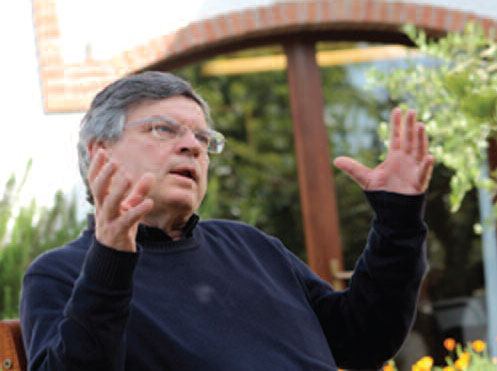
Speaking with Brother Guido Dotti
“Fifty years ago, when this community was founded, it soon became attractive to young people—I was one of them. At that time, a central role was played by Vatican II: the rediscovery of the Word of God in the Roman Catholic Church. This came about in the midst of the larger cultural changes of the 1960s—a new interest in community, rediscovery of the countryside, more still. Young men and women were drawn to a new form of an ancient life and to strive to live according to the Gospel. This remained true in the ’70s and ’80s as the community started to have a specific shape: the opportunity to be brothers and sisters in a common life, to be Roman Catholic and non-Roman Catholic, Orthodox and now Coptic also. The beginning was probably a more or less general search for the new. And then we realized that we were shaping something: a clear project of monastic life in dialogue with the contemporary world. Our dialogue with the world has its risks: being in touch and not apart, we feel what is changing around us.
“There is the question of what one feels as his or her vocation. Our way isn’t ‘better’—this is clear for us. And we don’t fear to face a life of sacrifice. The vocabulary itself of sacrifice doesn’t fit for us. Jesus Christ put an end to any sacrifice with his death on the cross. But it is a question of radicality, a question of taking seriously your own way to Christ. This kind of life demands commitment and serious involvement, but any Christian life is exigent. The important thing is to discover and reflect on your own way to Christ.
“Brother Enzo has an unmistakable gift. It’s in part a capacity to listen—to people, to events and situations. A capacity to be with people, listening even to the unexpressed words. It’s also a question of intellectual capacity, of varied skills. What attracted me, for instance, when I was eighteen, was Enzo’s capacity to involve you in a shared story. He could give a report from his travels, or discuss the next liturgy or page of the Gospel, and you felt involved.
“Some things are very traditional here, and some are radically new. For example, it’s traditional that there be a central figure to whom everyone looks, and at length—God willing, for decades and decades. On the other hand, we have set aside the exclusivity of Roman Catholicism. And that’s radical. Brother Enzo didn’t plan to have an ecumenical community, he was simply looking for a radical monastic life during and immediately after Vatican II. It happened that he spent three years alone here at Bose
—a small group of friends left him when he moved here. And the first to join him later were a Reformed pastor and a young woman. That was the turning point. They tried together to listen and discern the will of God. Brother Enzo spoke with his spiritual father, Cardinal Pellegrino. And the cardinal said, well, this is probably a sign from God; go on and see what will happen.
“I am convinced that living tradition moves on. Consider, for example, the tradition of monastic stability—the ancient requirement to spend one’s life in the same monastic community. At Bose we retain that tradition—but it has a new meaning here: stability is the opportunity to have a dynamic common life.
“When we visit monasteries that are traditional in all respects, we may at first meet with surprise: brothers and sisters together? No monastic habit in our daily lives, only for communal prayer in church?… But when we speak about our lives, our life of prayer, and we show photographs of where and how we live, they say, But this is our life! Monasticism cannot be defined only by externals; there is an underground river.”
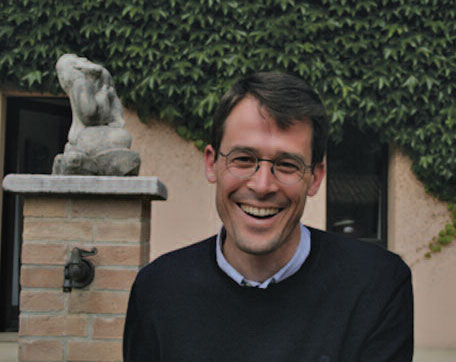
Speaking with Brother Matthias Wirz
“I arrived here in 1999; it has been sixteen years now. I was born and raised in a Protestant family near Lausanne, in the French-speaking part of Switzerland. After university I began a career as a journalist with a regional newspaper. All of us did a little bit of everything for the paper, but I eventually became—among other things—the designated ‘Vaticanist’ and music critic. It was a good education.
“At first I was a guest at Bose, but little by little I discovered that it might be a place where I could remain. Meeting the brothers and sisters, I had the impression that they were happy, and I began to feel that in the common life, the life of prayer, and so on, I might reach a sort of realization of myself, might find joy for my life. I was, and still am, Reformed—that is the common European term for Protestant—and I didn’t feel that I should change church in order to enter a monastery. As well, the community’s life and practice of hospitality made me understand that the human dimension of life here would be richer, more personal than in other places I might have joined. The beauty of the liturgy drew me. But mainly I had the impression that here people were themselves. They didn’t give the impression of having to adapt to some model. Everybody could be himself, herself. This touched me: I had the impression that if they are themselves, and seem happy, why not me? There are well known scholars here but also potters, gardeners—everyone can express himself or herself in the most natural way. But in the end I cannot give only rational reasons for the choice I made.
“I think I am among the first who didn’t come to Bose because of Brother Enzo. Of course, I knew and spoke with him, and he gave me a great deal—he still gives me a great deal. But what shall I say? I arrived in the community when we were already sixty people, and the personal link to him was not as strong as it had been even five or six years earlier. Of course he is the prior, the reference for what we do, how we do it, and so on. But I think now that I entered the community just at the moment when there was a step in its evolution. I and others of my generation entered because of the community. Some of the brothers have helped me become a real member of the community, even if Brother Enzo first gave the passion and guiding ideas. I understand that this suits his sense of things: he prefers to be less and less at the center so that others can grow and also take responsibility when he’s no longer there.”
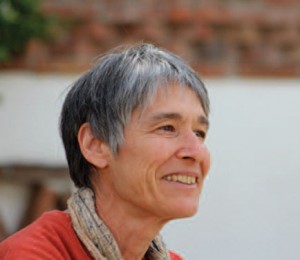
Speaking with Sister Sylvie Maubon
“I come from a family of artisans. I was always fascinated by manual work—my father was a cabinetmaker. In my experience, manual work is another form of self-realization; one is in service to something other than oneself. We obey the material. Instead of reinforcing narcissism, it can help us leave ourselves behind and to have the happiness of making something with all of one’s strength and heart. Often when I meet people the first thing I do, instinctively, is to look at their hands. When I see capable hands, I’m interested: what can he or she do with those hands?
“Sometimes I am asked whether work with one’s hands is a form of prayer. It depends on what is meant by prayer. Pure prayer, I would say no. But the fact of being entirely myself, with all of my capacities activated to do what I’m doing—I don’t know if it’s prayer but I am completely, humanly committed, and there is a certain plenitude of the person. One can hope that the spirit also is there. One works with passion and love, not solely with the aim of seeming brilliant in front of others, but for the pleasure of creation and to return to life something one has received from it.
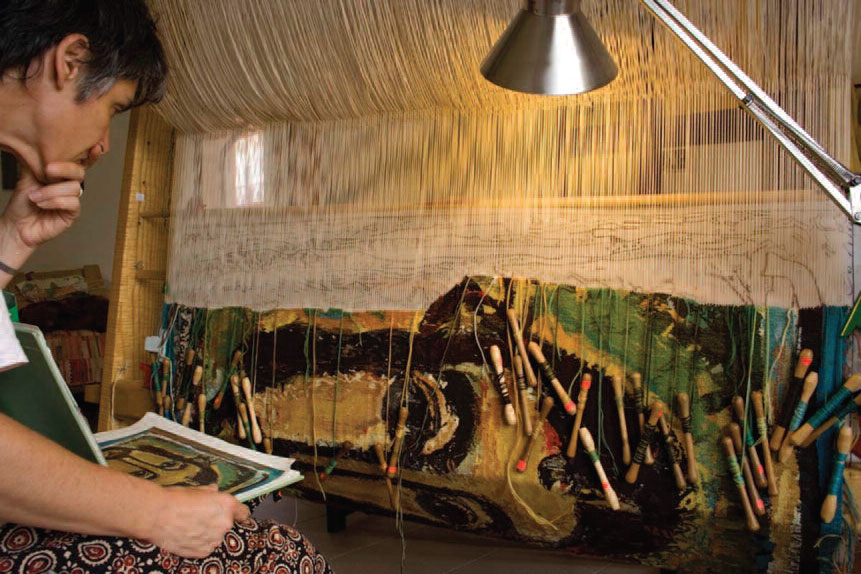
“Sometimes I ask myself whether the fact of having lived in the monastery for twenty-eight years has increased my faith. I’m not sure. As a child I was quite often alone and in contact with nature. My region of southern France, the Camargue, is especially beautiful. I spent hours alone, contemplating, fascinated by the blue sky, the wind, the green cypresses. I remember living moments of intense faith, feeling myself carried by something that inhabited me despite myself, and that in some way made contact with my solitude without dispelling it. I have the impression that I don’t now have more faith than that. When I turn toward inner silence, toward contemplation, I can sometimes—not always, it’s not automatic—experience this presence that inhabits me. I say that is my faith, but I can’t say it is greater than before. It is richer, has more means of expression, of nourishing itself, of finding answers also with the intellect, of better understanding the emotions sometimes produced by faith. It deepens, becomes purer thanks to human and spiritual maturation in light of the Word of God, which digs into you and also shows the weaknesses where you are called to grow. Christian faith and monastic life push you, stimulate you, nourish you. But the essential kernel of faith, I’m not sure it’s grown.”
◊ ◊
Brother Enzo wrote the Rule of Bose in the early 1970s with counsel from the small community of that time (look online at parabola.org for the Prologue to the Rule and some of the characteristic music of Bose). A closing paragraph of the Rule includes a remarkable thought: “Brother, sister, you have built the community, and you build it each day. But do not worry about giving the original intuition continuity in history.” Speaking with Brother Enzo, I asked about this daring statement, in effect a plea to future generations to undo some of what he in his time had done. This was his response: “The next generation mustn’t be concerned to continue the charism of the founders. There is no ‘charism of the founders’—there is monastic life. They will have a monastic life, but as the Lord and the times require today and tomorrow. Where forms are concerned, they must not follow me; that, absolutely not. The Spirit has a newness. Gospel, celibacy, and community, these must remain; all the rest can change. The Spirit will give the possibility to find new paths.”♦
Prologue to the Rule of Bose PDF
Audio
Bells of the Monastero di Bose calling the community together.
The opening chant on a Sunday morning. Audio files courtesy of the Monastero di Bose. Visit the monastery’s website if you wish to order the eight-CD program from which these few minutes are drawn.’

